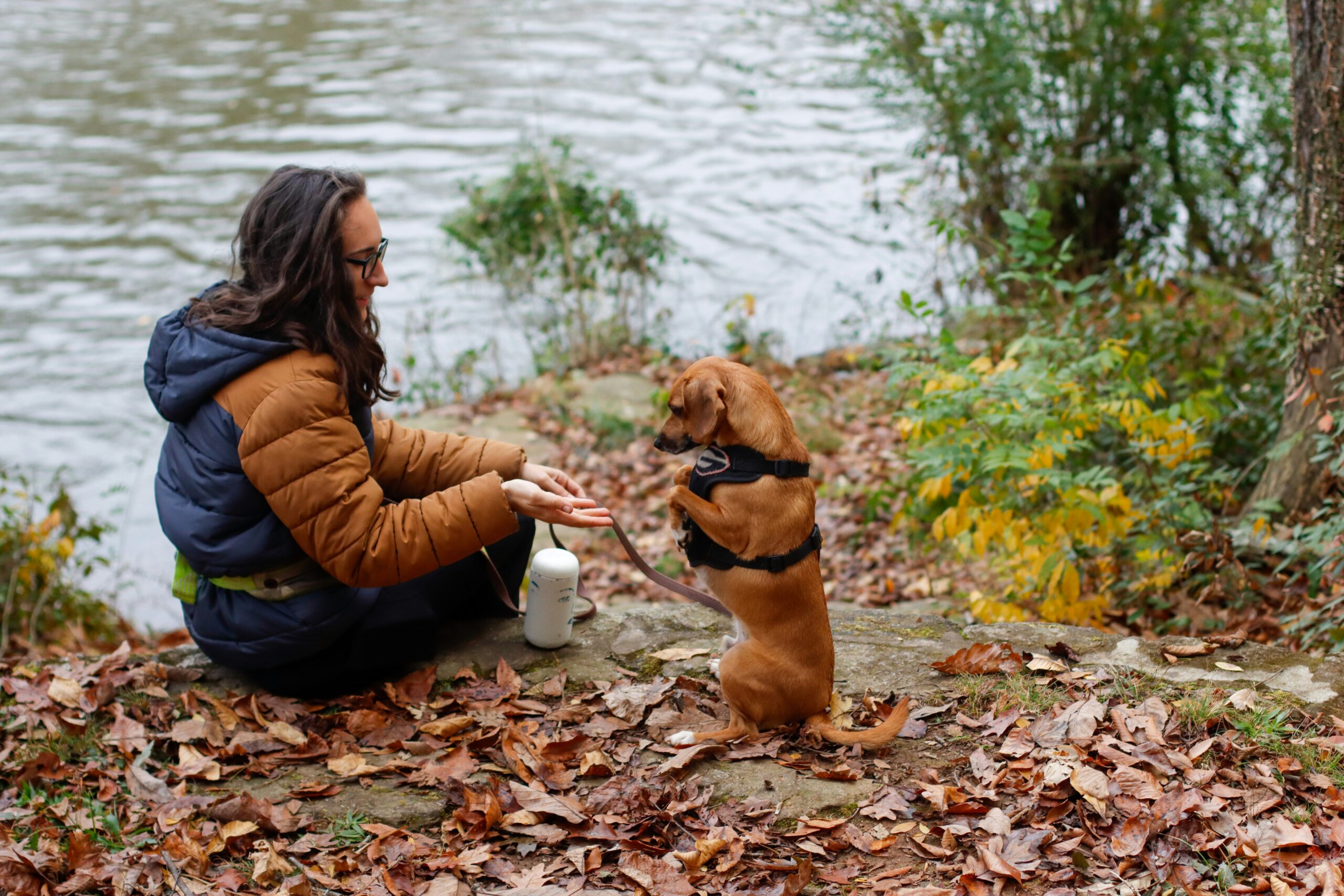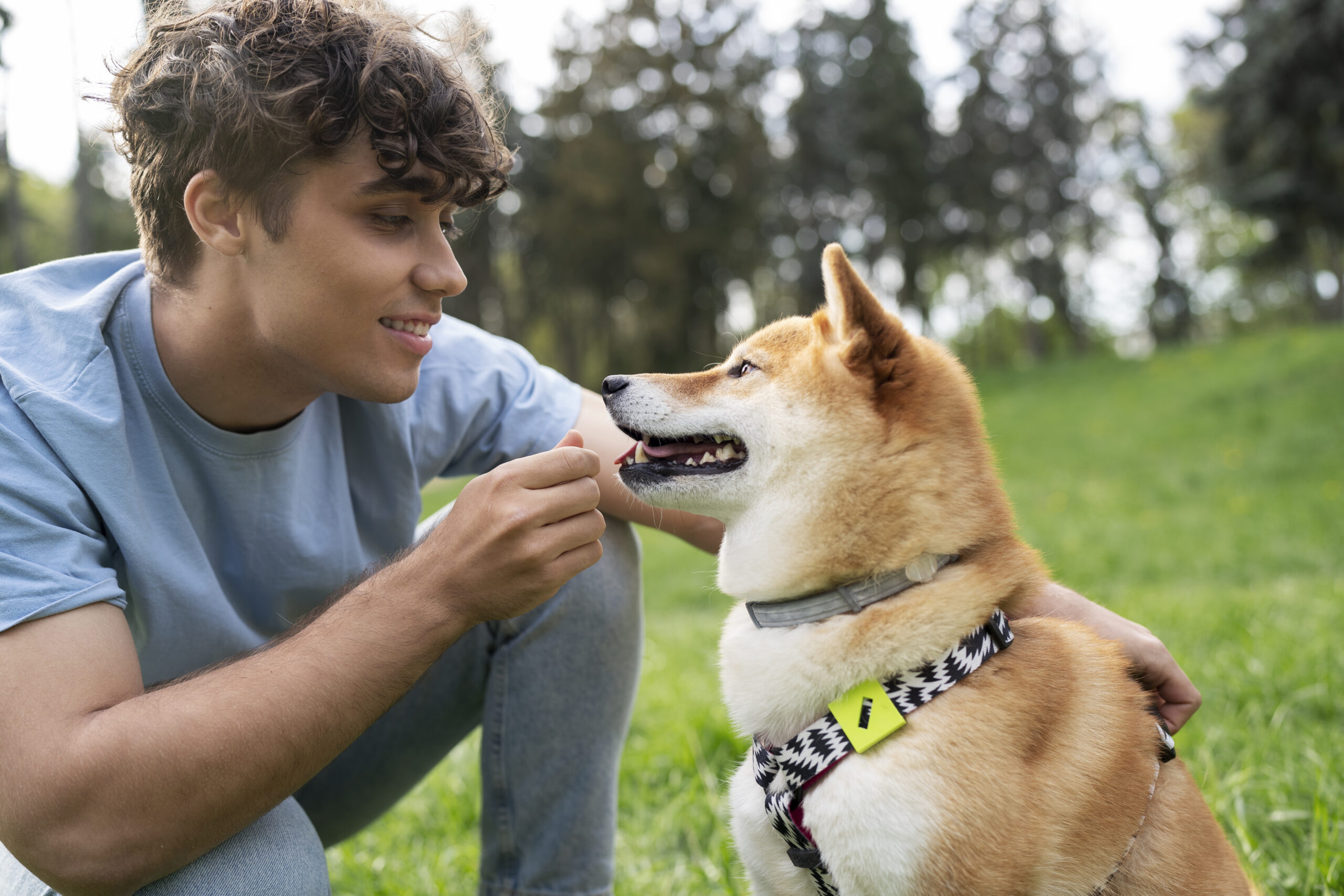Is the stress and embarrassment of your dog’s explosive barking at strangers making walks and having guests over a nightmare? You’re not alone. This isn’t a problem of a “bad dog,” but often a fearful one. While many guides offer quick fixes that fail to address the root of the issue, this definitive guide focuses on a compassionate, science-backed approach. We will demystify the professional techniques of Desensitisation and Counter-Conditioning, turning your frustration into an opportunity to build your dog’s confidence and deepen your bond.
This article provides a comprehensive, step-by-step blueprint to not just quiet the noise but to change how your dog feels about strangers, leading to lasting peace and trust. If you’ve ever asked yourself, Why does my dog bark at strangers and How to stop, you’ve come to the right place for a real, lasting solution. We will transform your understanding of the behaviour and empower you with the tools to create a calmer, more confident canine companion.
Table of Contents
- The “Why” Behind the Woof: Understanding the Root Cause of Barking
- The Science of Confidence: Your Introduction to Desensitisation & Counter-Conditioning (D&C)
- The Complete Step-by-Step Training Plan for Strangers
- Putting It Into Practice: Real-World Scenarios
- Proactive Management & Common Mistakes to Avoid
- When is it Time to Call a Professional Dog Trainer?
The “Why” Behind the Woof: Understanding the Root Cause of Barking
To effectively address barking, we must first understand it. Barking is a complex form of communication, not an act of malice. By identifying the underlying motivation, you can move from frustration to empathy and choose the correct training path. For most dogs who bark at strangers, the cause boils down to two primary emotional states: fear and territorial instinct.
Fear-Based and Reactive Barking
This is arguably the most common reason for intense barking at strangers, especially in rescue dogs or those who were not adequately socialised as puppies. For these dogs, an unfamiliar person represents a potential threat. The explosive barking is a distance-creating behaviour—a desperate attempt to say, “Go away! You’re scaring me!” This is the essence of fear-based barking at strangers. When you’re training a reactive dog, it’s crucial to recognise that the behaviour stems from anxiety, not aggression. According to the ASPCA’s guide on understanding the different types of barking, this type of vocalisation is often accompanied by stiff body language, a tucked tail, and backing away. Punishing this behaviour only validates the dog’s fear that strangers cause bad things to happen.
Territorial and Alarm Barking
Many dogs are genetically predisposed to protect their perceived territory, which can include your home, yard, car, and even you. When a stranger approaches this space, the dog’s instinct is to sound the alarm. This can be a simple “alert” bark to let you know someone is there, but it can quickly escalate into a more intense territorial display if the dog feels their warning is being ignored. Learning how to stop territorial barking at strangers involves managing the environment and teaching your dog that you are in control of the situation. This is particularly evident when your dog barks at strangers at the door, as this is the primary entry point to their sacred space. The goal is to show them that a stranger’s presence is not a threat to their home’s security.
The Science of Confidence: Your Introduction to Desensitisation & Counter-Conditioning (D&C)
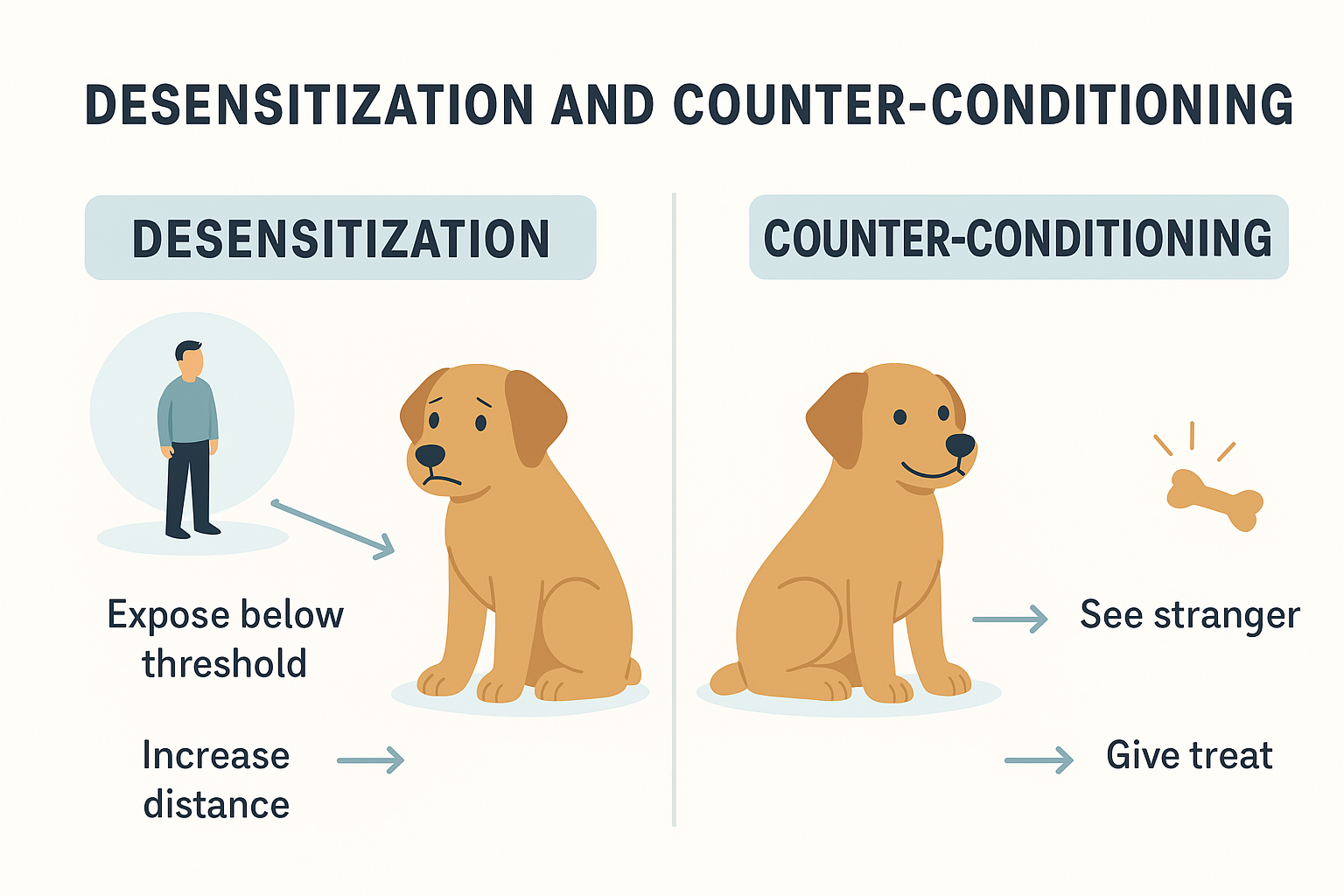
Instead of just listing tips, we will equip you with the “how”—the scientifically validated methodology that professional trainers use to achieve lasting behavioural change. Desensitisation and Counter-Conditioning (D&C) is the gold standard for treating fear-based behaviours because it targets the root cause: the dog’s negative emotional response.
What is Desensitisation? The Art of “Just Looking”
Desensitisation is the process of methodically exposing a dog to their trigger—in this case, a stranger—at a very low intensity. Specifically, you expose them at a distance where they can see the stranger but do not have a reaction. Think of it like getting into a cold swimming pool. You don’t jump into the deep end; you start by dipping your toes in, then slowly wade in deeper, allowing your body to acclimate. For desensitisation dog strangers training, this means finding a distance where your dog can notice a person without barking, lunging, or showing signs of stress. Over many training sessions, you will gradually and carefully decrease that distance.
What is Counter-Conditioning? Changing the Emotional Response
Counter-conditioning is the magic that happens alongside desensitisation. It’s the process of changing your dog’s association with a trigger from a negative one to a positive one. While your dog is calmly looking at the stranger from their “safe” distance, you introduce something they love, like a piece of boiled chicken, cheese, or their favourite toy. The rule is simple: a stranger appears, and an amazing treat appears. Stranger disappears, treat disappears. Over time, the dog’s brain rewires itself. The sight of a stranger no longer predicts fear; it predicts a delicious reward. This is the heart of using positive reinforcement for barking at strangers.
Why D&C is the Gold Standard for Lasting Change
This two-part method is the most effective and humane way to resolve fear-based barking because it addresses the underlying emotion. Aversive tools like shock collars or yelling at your dog might suppress the bark in the moment, but they do nothing to change how the dog feels. They often make the fear worse by confirming the dog’s belief that strangers cause pain and stress. The UC Davis School of Veterinary Medicine specifically recommends that owners desensitise and counter-condition to the triggers of barking. By using D&C, you aren’t just silencing a behaviour; you are building your dog’s confidence and teaching them that the world isn’t such a scary place after all.
The Complete Step-by-Step Training Plan for Strangers
Now that you understand the science, let’s put it into practice with a clear, actionable protocol. Consistency and patience are your most important assets.
Step 1: Gather Your Tools & Identify Your Dog’s Threshold
Before you begin, you need the right equipment. Your success depends on having high-value rewards that are more enticing than the distraction of a stranger.
- Tools: A standard 6-foot leash (no retractable leashes), a treat pouch for easy access, and a variety of high-value treats (think small pieces of chicken, hot dogs, or cheese).
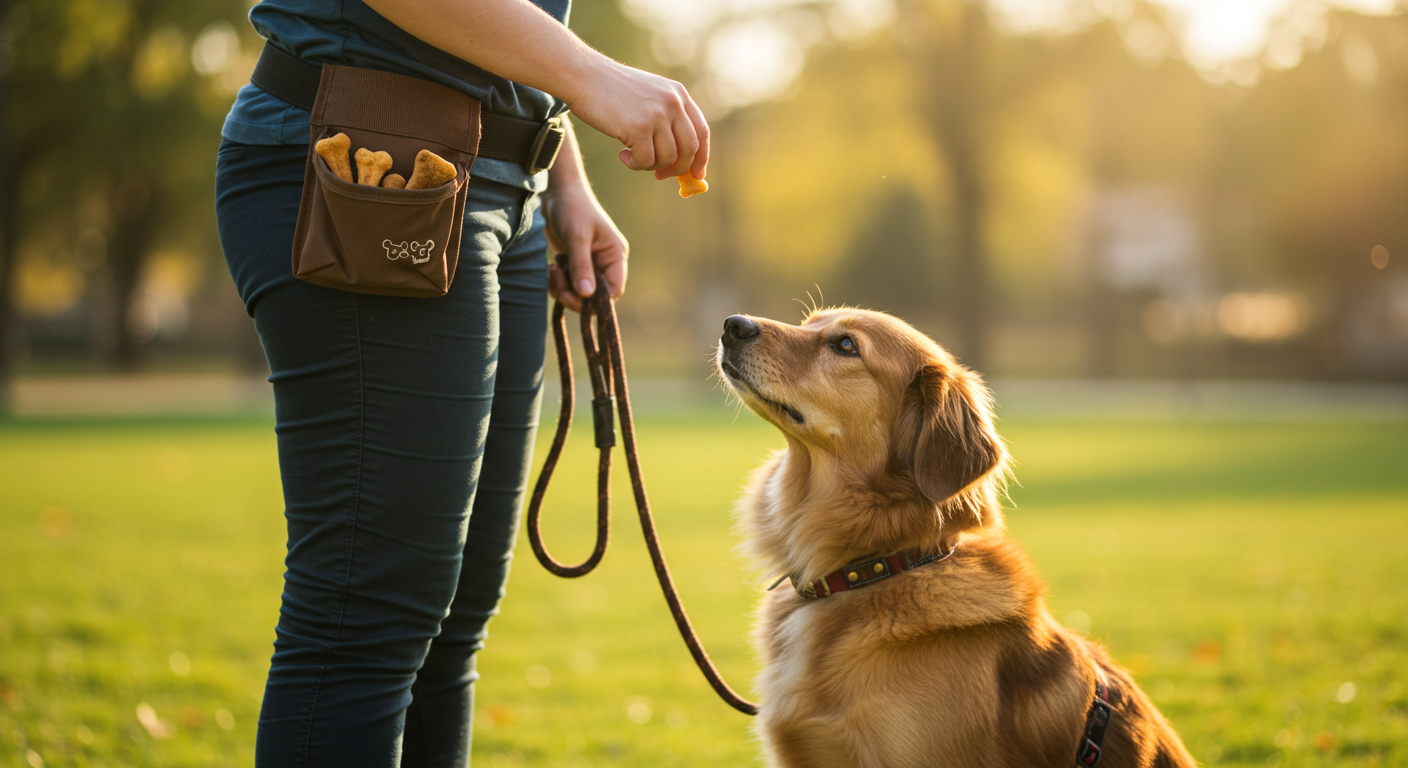
Identify the Threshold: Your dog’s threshold is the exact distance at which they can see a stranger without reacting. To find it, take your dog to a park or quiet street where you can observe people from far away. Start at a great distance and slowly move closer. The moment you see your dog tense up, stare, or even perk their ears with concern, before they bark—that’s the edge of their threshold. For your training to be effective, you must always work “under threshold,” meaning you stay at a distance where they remain calm.
Step 2: Master the “Look at That” (LAT) Game
This game is the practical application of D&C. It teaches your dog that looking at a stranger earns them a reward.
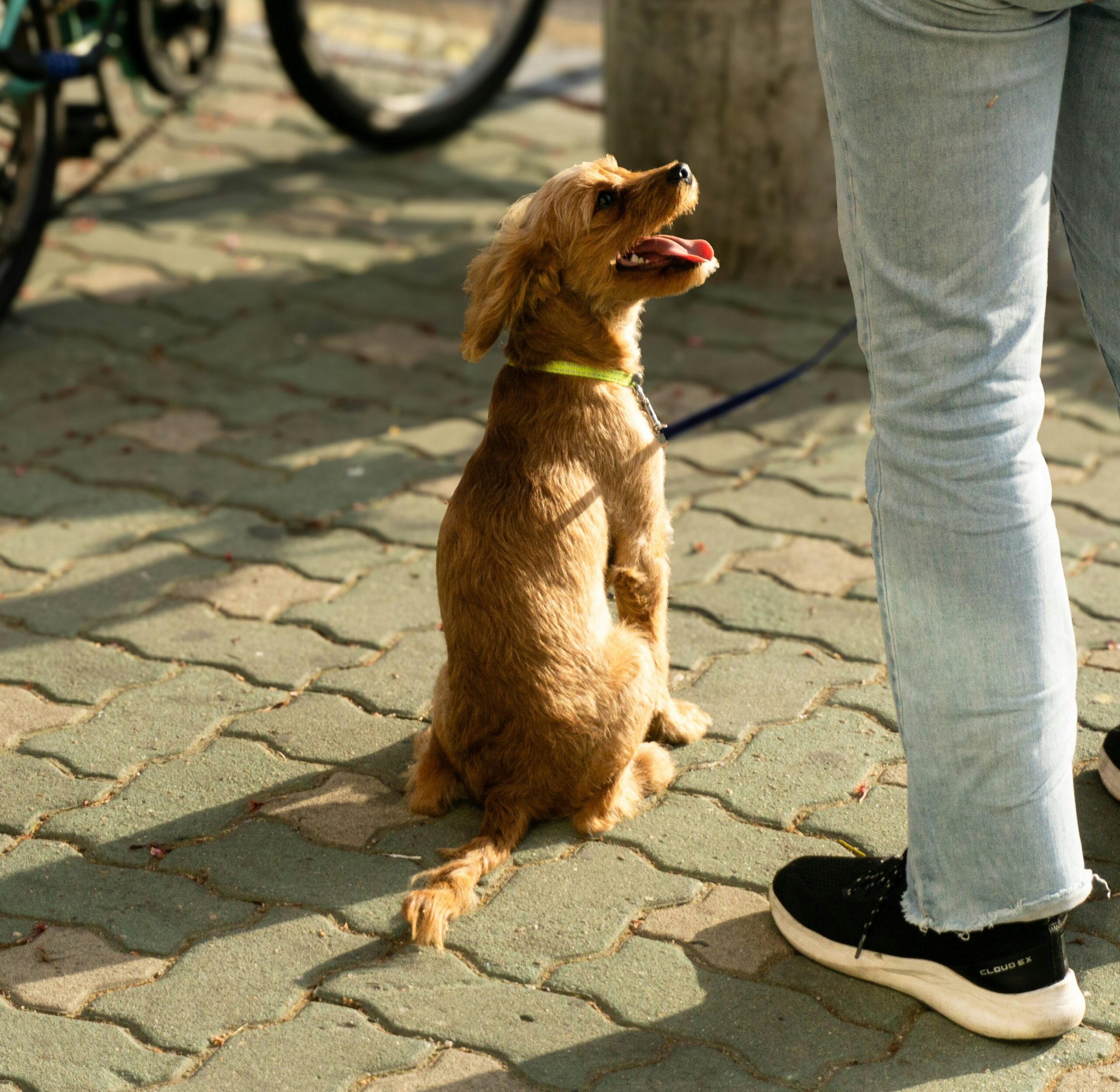
- Position yourself with your dog at your chosen “under threshold” distance from where strangers will appear.
- The moment your dog looks at a stranger, mark the behaviour by saying “Yes!” in a cheerful voice.
- Immediately give your dog a high-value treat. The reward must come after they look at the stranger.
- At first, you may need to reward them for just a quick glance. As they get better, you can wait for them to look at the stranger and then turn their head back to you for the treat. This becomes a beautiful, new pattern: “I see a person, I look back at my human for my cookie.”
Step 3: The Slow Advance: Gradually Decreasing Distance
This is a marathon, not a sprint. Once your dog is reliably looking at strangers and then back at you for a reward at your starting distance, you can begin to close the gap, but only by a few feet at a time.
Conduct short, successful sessions of 5-10 minutes. If at any point your dog barks or reacts, you’ve moved too quickly. Don’t scold them; simply create more distance until they are calm again and end the session on a positive note with an easy win. Over many weeks and months, you will slowly shrink the bubble of fear around your dog.
Putting It Into Practice: Real-World Scenarios
The D&C protocol is your foundation. Here’s how to apply it to the most common and challenging situations.
On Walks: How to Stop Your Dog Barking at Strangers on Walks
Walking can be the most stressful part of your day. The key is a combination of management and training.
- Management: Your job is to be your dog’s advocate and prevent them from going over the threshold. This means being vigilant. If you see a person approaching, immediately increase the distance. Cross the street, turn around and walk the other way, or duck behind a parked car to create a visual barrier. This is not avoidance; it’s smart management that keeps your dog feeling safe.
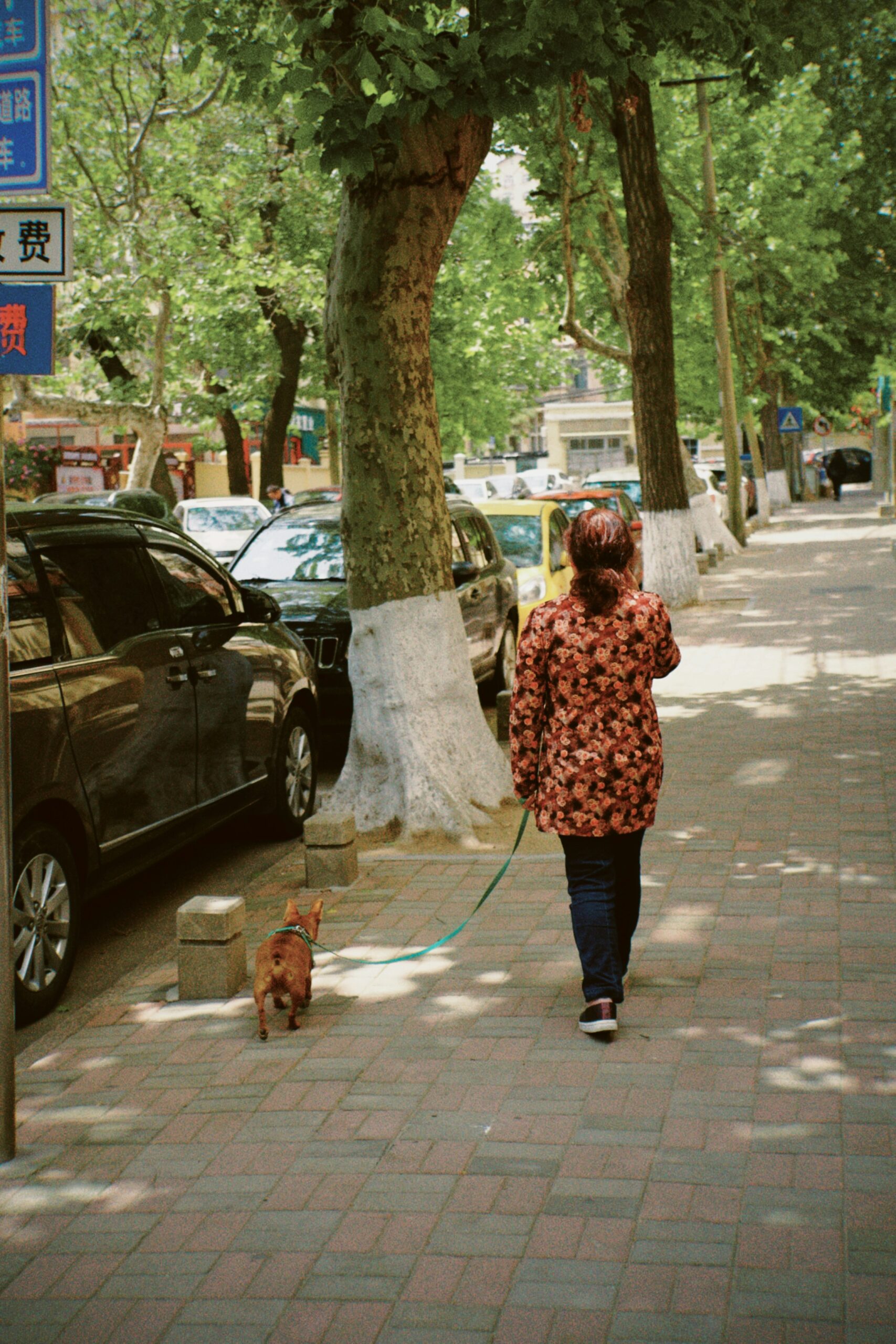
- Training: When you can maintain a safe distance, play the “Look at That” game. See a person across the street? “Yes!” and treat. Someone a block away? “Yes!” and treat. This will stop dog barking at strangers on walks by slowly changing their perception of people from threats to opportunities for a reward.
At the Door: Managing Barking When the Bell Rings
The doorbell is a classic trigger for territorial and alarm barking. This requires a two-pronged approach.
- Management: First, teach your dog an alternative behaviour. Train them that the doorbell is a cue to go to their mat or bed (“place” command) and wait for a special, long-lasting chew that they only get when guests arrive. You can muffle the doorbell’s sound with tape to lower its intensity initially.
- Training: You will need a helper for this. Have a friend stand far down the street. The moment they appear, begin D&C. Have them take one step closer, treat your dog for calm behaviour. Continue this process over many sessions, with your friend getting closer to the door, eventually touching the doorknob, and then ringing the bell softly. This systematic desensitisation is crucial when your dog barks at strangers at the door.
In the Home: A Plan for Socialising an Adult Dog with Guests
Introducing a fearful dog to guests inside their territory requires careful management to ensure everyone’s safety and your dog’s comfort.
- Protocol: When a guest arrives, have your dog securely on a leash or behind a baby gate. Do not allow the guest to approach or make eye contact with your dog. Instead, arm your guest with high-value treats.
- The Guest is a Treat-Dispenser: Have the guest casually toss treats in your dog’s direction without looking at or talking to them. The goal is for your dog to learn that this new person makes amazing things happen.
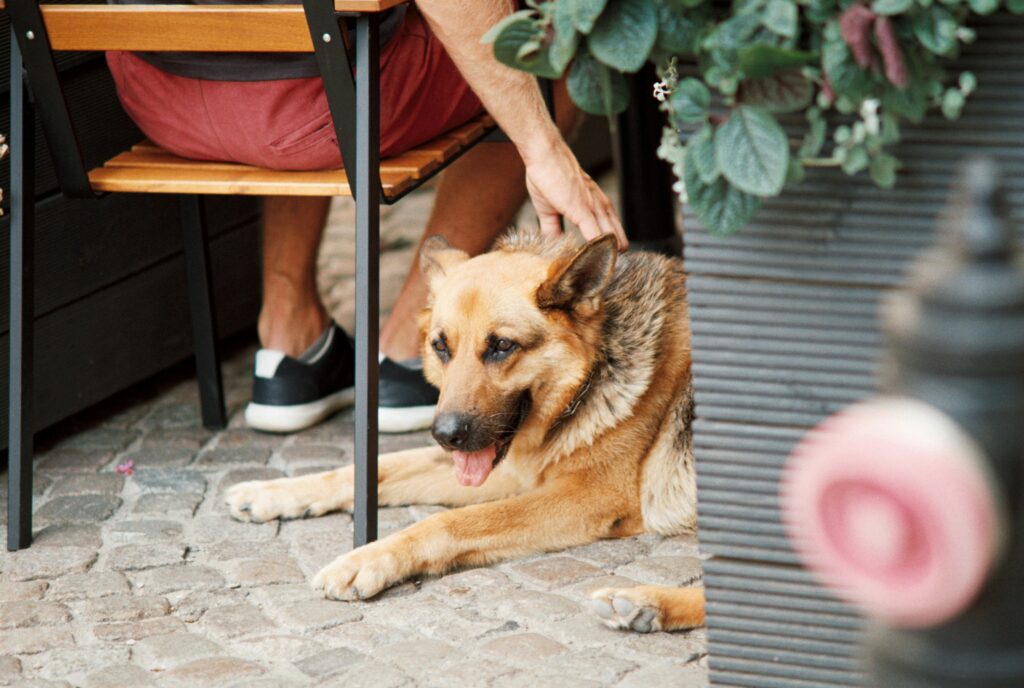
- This is how to socialise an adult dog that barks at strangers safely and effectively. The interaction is on the dog’s terms, building positive associations without force.
Proactive Management & Common Mistakes to Avoid
Training is crucial, but so is managing your dog’s environment to prevent them from practising the unwanted behaviour. Setting your dog up for success is half the battle.
Environmental Management: Set Your Dog Up for Success
You can reduce barking triggers without active training. If your dog barks at every person walking past your window, manage the environment. Apply translucent window film to your windows, which lets in light but obscures the view. Use a white noise machine or a fan to muffle sounds from outside that might trigger alarm barking. As noted by experts in How to Stop Territorial Barking at Tufts University, these simple management techniques prevent the dog from constantly being triggered, which lowers their overall stress level and makes training more effective.
Aversive “Fixes” That Make Things Worse
It’s critical to understand what not to do. Many common “quick fixes” are not only ineffective but can be deeply damaging to your dog and your relationship.
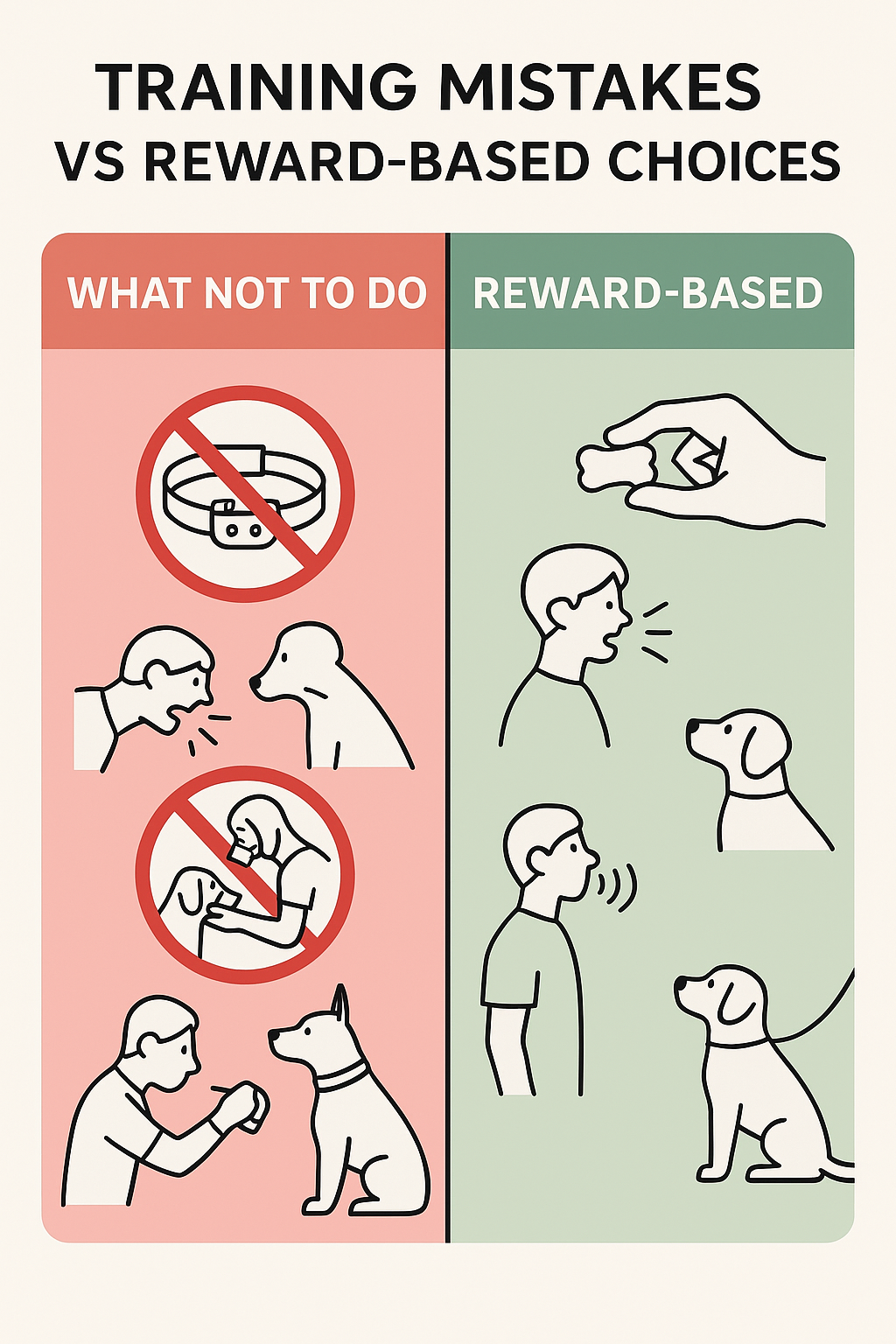
- NEVER yell at your dog for barking. To your dog, it just sounds like you’re barking along with them, which can escalate their arousal.
- NEVER use a shock, prong, or spray collar. These tools punish the warning signal (the bark) but do nothing to address the underlying fear. This can create a dog who is still terrified but now suppresses their bark, potentially leading them to bite without any warning.
- NEVER hold your dog’s muzzle shut or force them into a “sit.” This is physically intimidating and increases their anxiety, confirming their fear that strangers cause scary and unpleasant things to happen.
When is it Time to Call a Professional Dog Trainer?
While this guide provides a powerful framework, some situations require professional, hands-on guidance. You should seek help from a certified professional if:
- Your dog’s lunging and barking are so strong that you cannot safely control them.
- Your dog has a history of biting a person.
- Your dog’s fear is so extreme that you cannot find a distance where they are under threshold, preventing any progress.
When looking for help, search for a certified trainer or veterinary behaviourist who explicitly uses force-free, positive reinforcement methods. A qualified professional dog trainer aggression towards strangers will be able to create a customised, safe plan for you and your dog.
Conclusion
Changing your dog’s habit of barking at strangers is a journey of building confidence, not suppressing a behaviour. The goal is to move beyond the frustration and compassionately address the root cause of their anxiety. By using the science-backed principles of Desensitisation and Counter-Conditioning, you can fundamentally change how your dog feels about the world. You now have a complete plan to not only manage the barking but to forge a more resilient, trusting, and peaceful relationship with your canine companion. It takes patience and consistency, but the resulting peace of mind is worth every effort.
Feeling overwhelmed? For personalised support, explore our one-on-one training programs designed for reactive dogs.
FAQ
Why does my dog bark at strangers, and how do I stop it?
Your dog most likely barks at strangers out of fear or territorial instinct. The bark is a communication tool to make the perceived threat go away. The most effective way to stop it is not by punishing the bark, but by changing your dog’s underlying emotional response through a systematic process of Desensitisation (gradual exposure) and Counter-Conditioning (creating a positive association with strangers using high-value treats).
How long will it take to stop my dog from barking at strangers?
There is no set timeline, as every dog is an individual. Progress depends on your dog’s specific level of fear, their past experiences, and your consistency with the training plan. Real, lasting change is measured in weeks and months, not days. Focus on small, successful steps rather than a deadline.
Can you socialise an adult rescue dog that is scared of everyone?
Yes, absolutely. While an adult dog with a history of fear may never become a social butterfly who loves all strangers, you can dramatically improve their quality of life. The goal of socialisation for a fearful adult is often neutrality and confidence, not forced interaction. By using humane, positive methods, you can teach them that strangers are not a threat, allowing them to exist peacefully on walks and coexist calmly with guests in your home.



